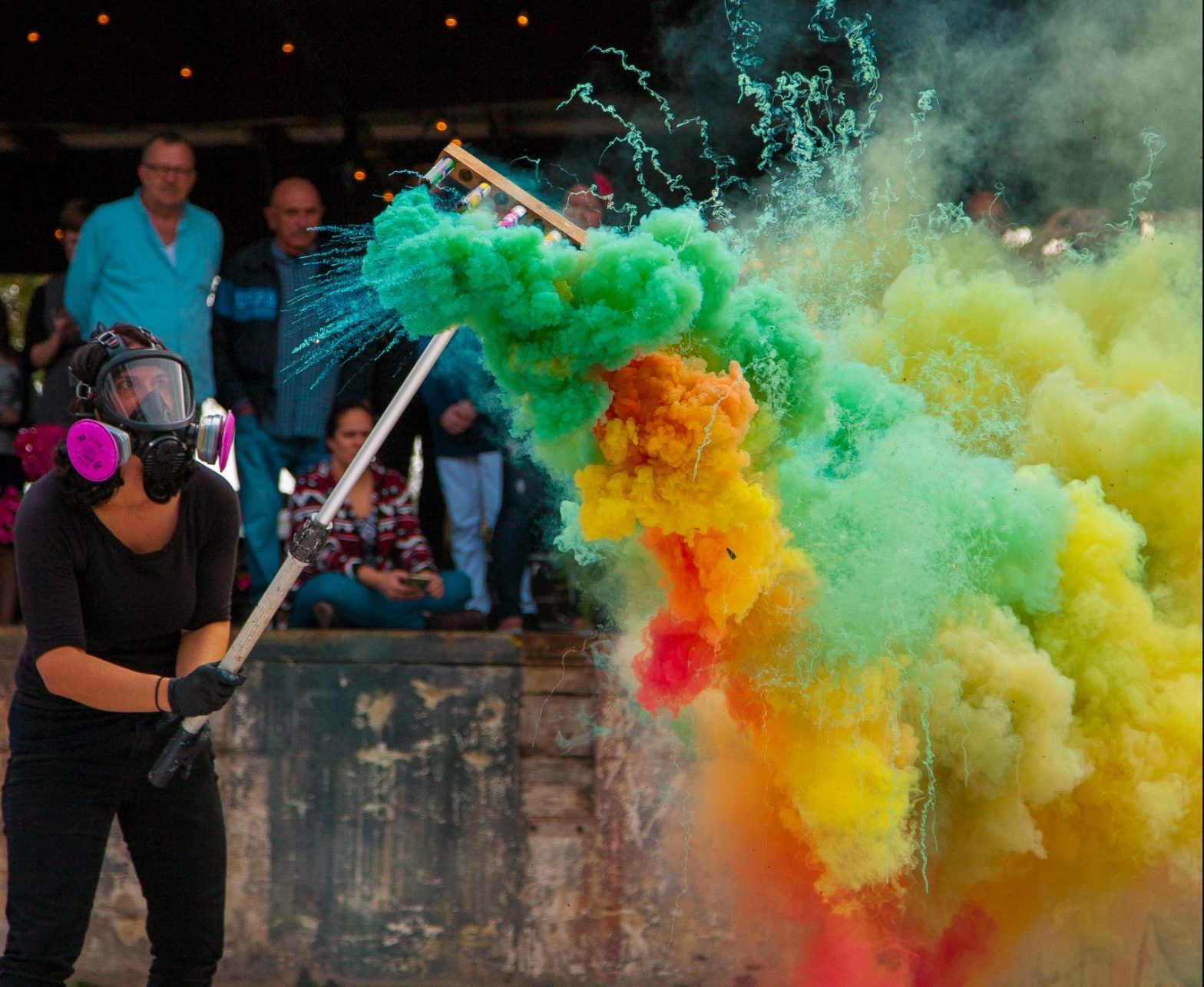For Hagan Tampellini, the current Les Yeux du Monde show felt right. “Modern Alchemy: Rosemarie Fiore & Ana Rendich” is the first exhibition conceived and curated by Tampellini, the gallery’s director and daughter of LYDM founder, the late Lyn Bolen Warren.
“Many of the shows we’re having this year are ones my mother was in the process of planning, but this is new,” she says. “These two artists made so much sense to me. Their works communicate so well with each other in the gallery space.”
Fiore and Warren studied under groundbreaking art historian Lydia Gasman. “Rosemarie learned about Wolfgang Paalen and the fumage technique from Lydia,” says Tampellini. “Ana, another artist in my mother’s intellectual orbit, is someone whose work we’ve represented and championed for some time, so this show felt both true to our roots and a fitting way to usher in our next chapter.”
Fiore, who graduated from UVA, where she was awarded an Aunspaugh Fifth-Year Fellowship, creates paintings using colored smoke. She designs and builds tools (sculptures really) with resin, plaster, wood, metal, and other materials that hold smoke bomb canisters connected by a series of linked fuses. The tools allow Fiore to control the smoke that’s emitted when the bombs are ignited. She gives her over 200 tools/sculptures curious names: Burl, Quad Axel, or Shapeshifter, and decorates them individually so she can identify them when things are moving fast. The largest tool weighs 400 pounds, can hold 150 canisters, and requires a forklift to operate it. When lit, the smoke is expelled with great force from the containers. The artist has about two minutes to manipulate the tool across the canvas.
Fiore also uses acrylic paint, which she applies using silkscreen, partly to keep the surface as smooth as possible. This is a necessity, as smoke is very responsive to topography. The interplay between the two mediums gives the work dimensionality and helps achieve what Fiore calls “a sense of both motion and weightlessness.” The effect is clear in “Smoke Painting #71,” with its intersecting fractured shards that, with the swirls of smoke, create a spinning vortex.
“Smoke Painting #70” is a wild, exhilarating work that has so much going on it’s amazing Fiore manages to maintain control. Somehow the broad planes on the left, with their interesting blooms of paint and smoke, are balanced by the almost marbleized effect of the ground down surface on the right. At the center, yellow rays are interrupted by giant swirls of graffiti-like indigo smoke.
“Much of my smoke painting process is out of my control,” says Fiore, who compares it to lighting fireworks. “They’re all built differently and don’t perform the same way… It’s really about orchestrating chaos.”
According to Anne Carson in Grief Lessons, tragedy exists because we’re full of rage and we’re full of rage because we are full of grief. For Rendich, this resonates profoundly. “Grief has tremendous power,” she says. “It can paralyze and blind us from other possibilities. I see my works, which I think of as spaces, like open windows that bring in light. It’s light emerging from grief, grief that the viewer doesn’t see. It’s not because the grief has gone or has eroded, it’s because I cope with it by creating spaces of hope.
Originally from Argentina, Rendich grew up under a military dictatorship. In 1984, when she was 23, she and five other art students were summoned to an industrial complex on the outskirts of Buenos Aires. When they arrived, there was a line of family members of the “Disappeared,” the 30,000 civilian noncombatants who were kidnapped and murdered by the military following the 1976 coup d’état. Rendich spent three days listening to the families and trying to capture their loved ones on paper.
Rendich’s work is both spare and sumptuous. Her mixed-media panels, arranged in pairs and multiples, suggest minimalism, but possess a deep emotional element. Each panel is composed of layers of oil paint and resin. It’s how Rendich achieves her rich color and glossy surfaces.
Each layer of resin takes at least seven days to fully cure, and the oil can take from three days to two weeks, depending on the color and temperature of the room. One piece may take anywhere from one to three months to complete.
Rendich’s combinations cause the viewer to pause. You can see this in “Yellow and Red,” where the yellow, really a creamy white, is so unexpected next to the deep carmine. It makes you stop to consider it, thinking how unusual it is, and admiring the subtle boldness of the pairing.
Recently, Rendich introduced marks into her work. In “Radar II,” the green panel features a spiral that represents our going around and around, whether it’s school shootings or war. “Amapola” (Poppy), a large tondo adorned with frilly disks of Japanese paper, is about how we take something pure and make it dirty. In this case, the poppy flower is tainted by the heroin trade blighting South America.
In Rendich’s shiny surfaces we see reflected not only ourselves, but also our surroundings. We recognize both, and even though they look utterly different from reality, we get an inkling of what she means about changing grief into hope. As she builds the pieces up layer by layer, she turns the heartache she carries into beauty.
